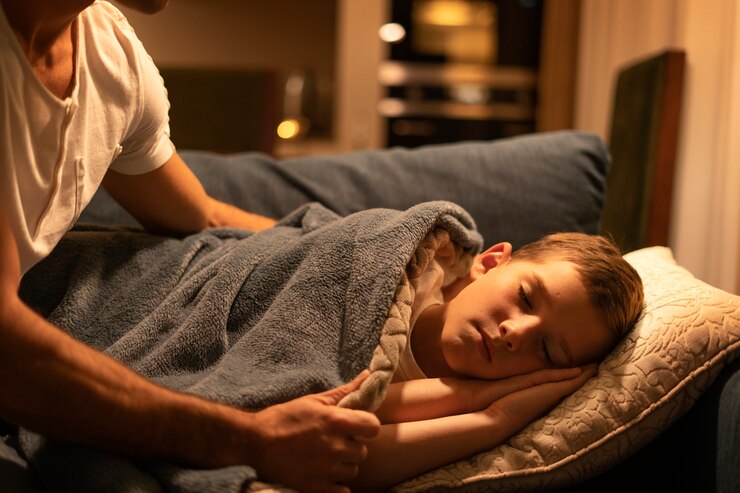Be Observant
Monitor Sleep Patterns: Keep a close eye on your child’s sleep patterns. Note the time they go to bed, wake up, and the duration of sleep.
Observe Behavior Pay attention to your child’s behavior during the day. Excessive sleepiness, irritability, and difficulty concentrating may indicate a sleep disorder.
Establish a Bedtime Routine
Consistent Bedtime Create a consistent bedtime routine to help regulate your child’s sleep-wake cycle.
Limit Screen Time Reduce exposure to screens (phones, tablets, computers, TVs) at least an hour before bedtime, as the blue light emitted can interfere with melatonin production.
Open Communication
Talk to Your Child Encourage your child to communicate any difficulties or discomfort they may have during sleep. They might describe nightmares, restless legs, or trouble falling asleep.
Ask About Daytime Symptoms: Inquire about any issues during the day such as excessive sleepiness, difficulty paying attention, or frequent mood swings.
Create a Sleep-Friendly Environment
Comfortable Bed Ensure your child’s bed is comfortable and the room is cool, dark, and quiet.
Remove Distractions Minimize noise and eliminate potential distractions in the bedroom.
Rule Out Physical Causes
Health Checkup Consult with your child’s pediatrician to rule out any underlying medical issues that could contribute to sleep problems.
Consider allergies or respiratory issues might affect sleep. Check for signs like snoring, frequent awakening, or difficulty breathing.
Evaluate Sleep Patterns
Keep a Sleep Diary Record your child’s sleep patterns for at least a week. Include bedtime, wake time, naps, and any nighttime awakenings.
Look for Patterns Identify any recurring patterns or triggers for sleep disturbances.
Professional Evaluation
Consult a Pediatrician or Sleep Specialist: If sleep problems persist or if you suspect a sleep disorder, consult a pediatrician or a sleep specialist. They may recommend further evaluation, such as a sleep study.
Behavioral Interventions
Cognitive Behavioral Therapy for Insomnia (CBT-I)This approach can be adapted for children and may involve techniques to change negative thoughts and behaviors related to sleep.
Gradual Changes Make gradual changes to improve sleep habits. For example, adjusting bedtime or reducing caffeine intake.
Treat Underlying Conditions
Address Health Issues If there are underlying medical conditions contributing to sleep problems, work with healthcare professionals to manage or treat those conditions.
Support Healthy Habits
Encourage Physical Activity Regular exercise can promote better sleep.
Balanced Diet: Ensure your child has a balanced diet, and limit caffeine intake, especially in the afternoon and evening.



